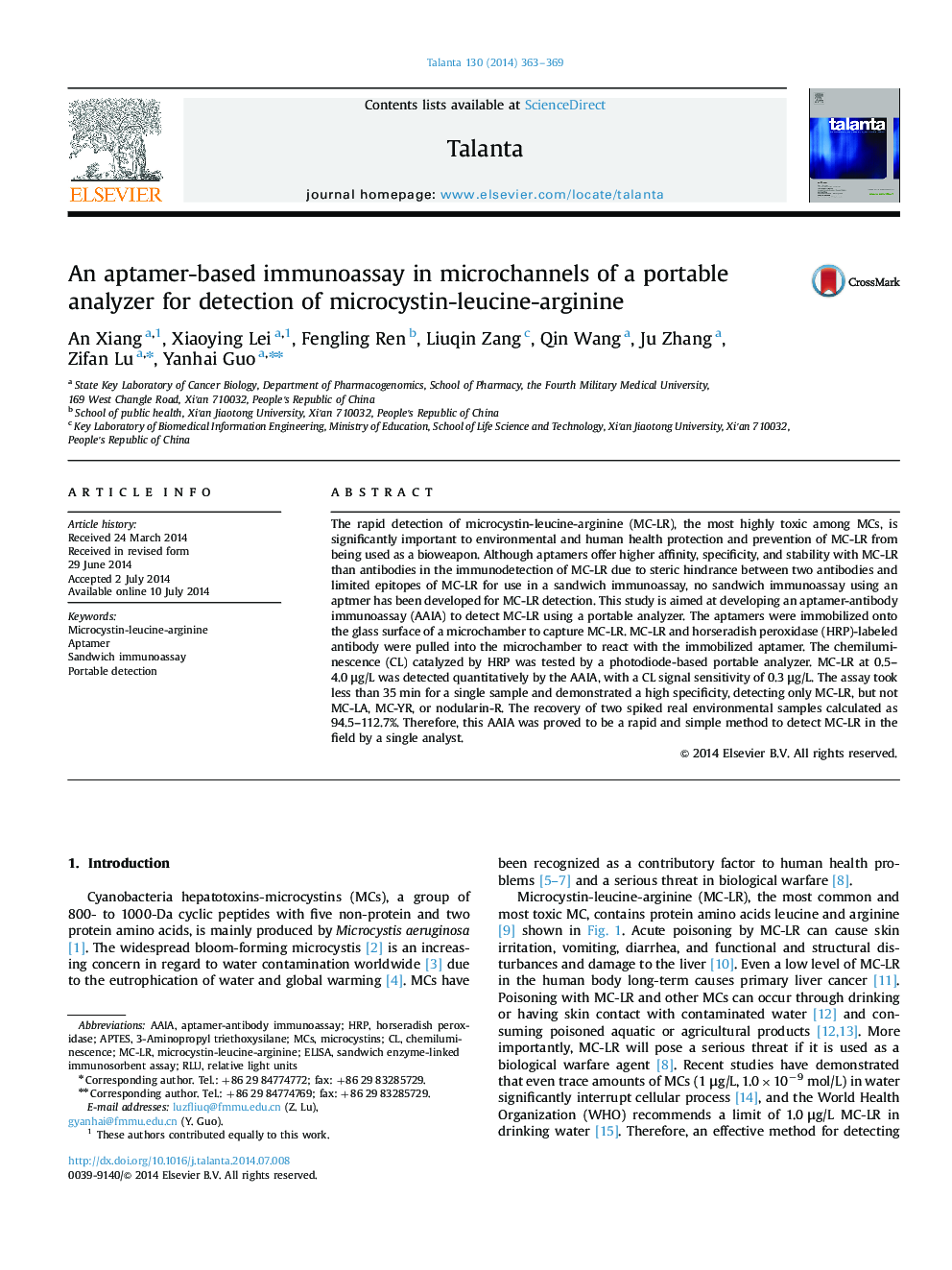| Article ID | Journal | Published Year | Pages | File Type |
|---|---|---|---|---|
| 1243603 | Talanta | 2014 | 7 Pages |
•We developed an aptamer-based immunoassay to detection MC-LR.•The specificity was promoted by this aptamer-MC-LR-antibody sandwich method.•A portable analyzer was used to test the chemiluminescence signals catalyzed by HRP.•It proved a simple quantitative method to detect MC-LR in the field by a single analyst.
The rapid detection of microcystin-leucine-arginine (MC-LR), the most highly toxic among MCs, is significantly important to environmental and human health protection and prevention of MC-LR from being used as a bioweapon. Although aptamers offer higher affinity, specificity, and stability with MC-LR than antibodies in the immunodetection of MC-LR due to steric hindrance between two antibodies and limited epitopes of MC-LR for use in a sandwich immunoassay, no sandwich immunoassay using an aptmer has been developed for MC-LR detection. This study is aimed at developing an aptamer-antibody immunoassay (AAIA) to detect MC-LR using a portable analyzer. The aptamers were immobilized onto the glass surface of a microchamber to capture MC-LR. MC-LR and horseradish peroxidase (HRP)-labeled antibody were pulled into the microchamber to react with the immobilized aptamer. The chemiluminescence (CL) catalyzed by HRP was tested by a photodiode-based portable analyzer. MC-LR at 0.5–4.0 μg/L was detected quantitatively by the AAIA, with a CL signal sensitivity of 0.3 μg/L. The assay took less than 35 min for a single sample and demonstrated a high specificity, detecting only MC-LR, but not MC-LA, MC-YR, or nodularin-R. The recovery of two spiked real environmental samples calculated as 94.5–112.7%. Therefore, this AAIA was proved to be a rapid and simple method to detect MC-LR in the field by a single analyst.
Graphical abstractFigure optionsDownload full-size imageDownload as PowerPoint slide
